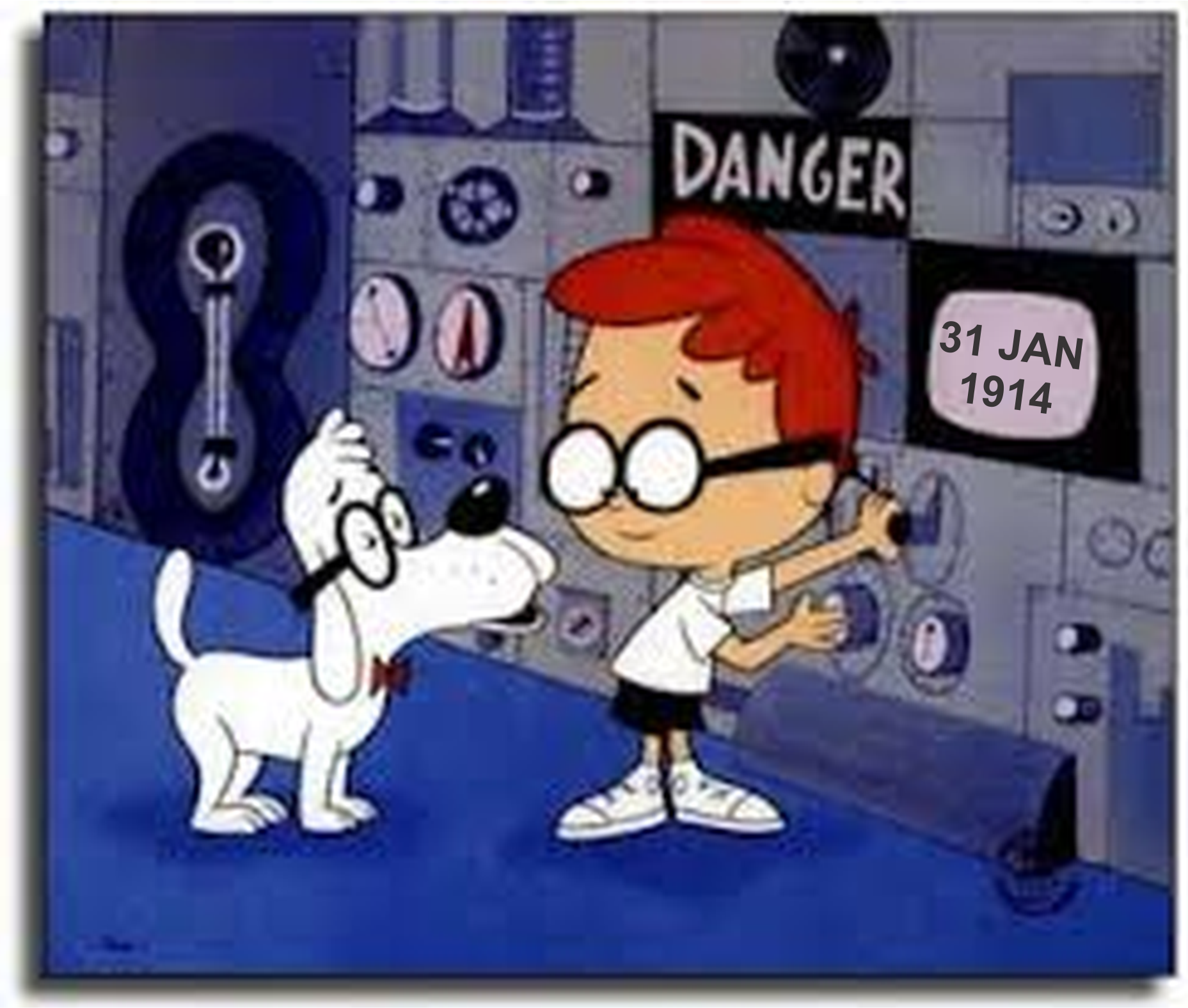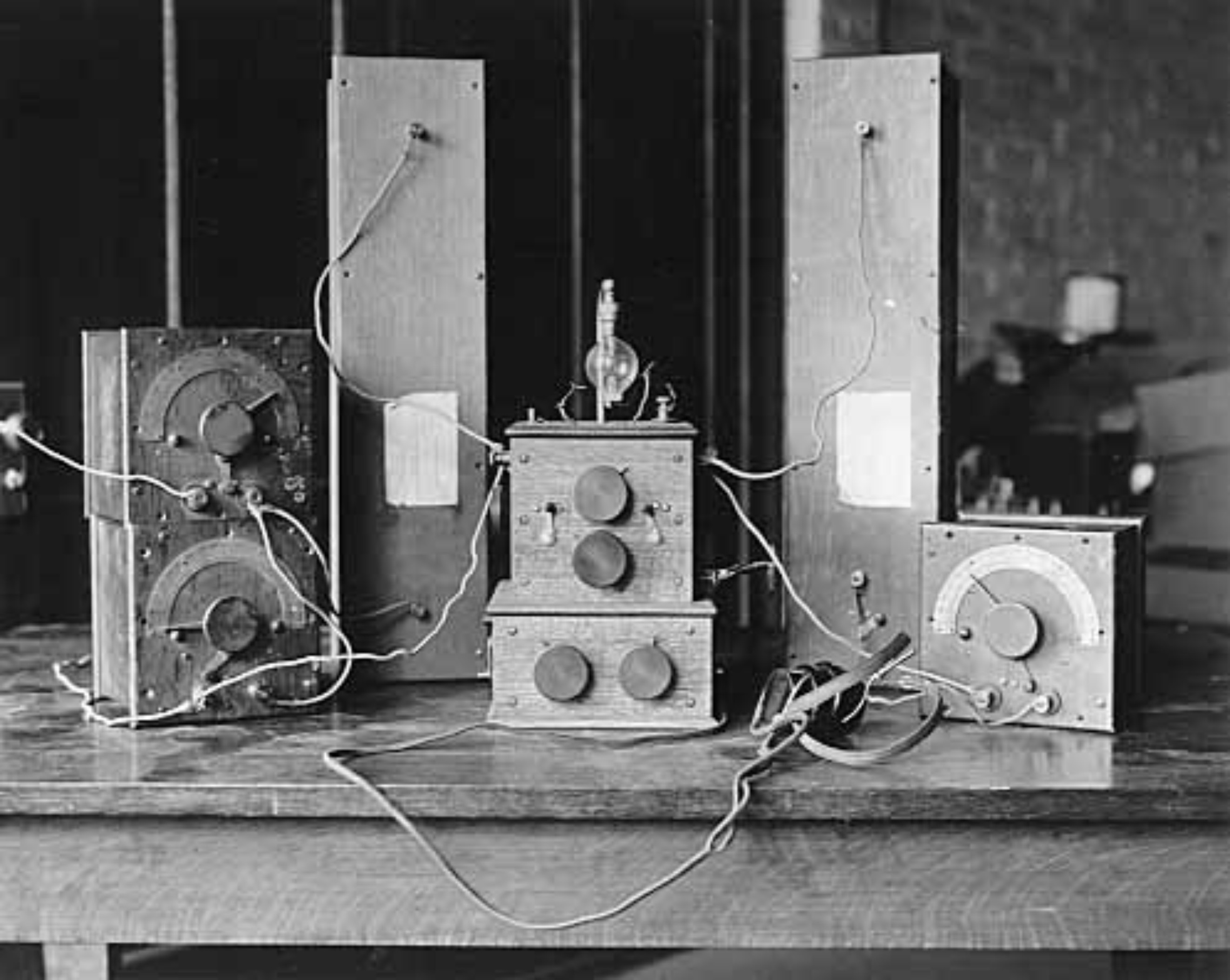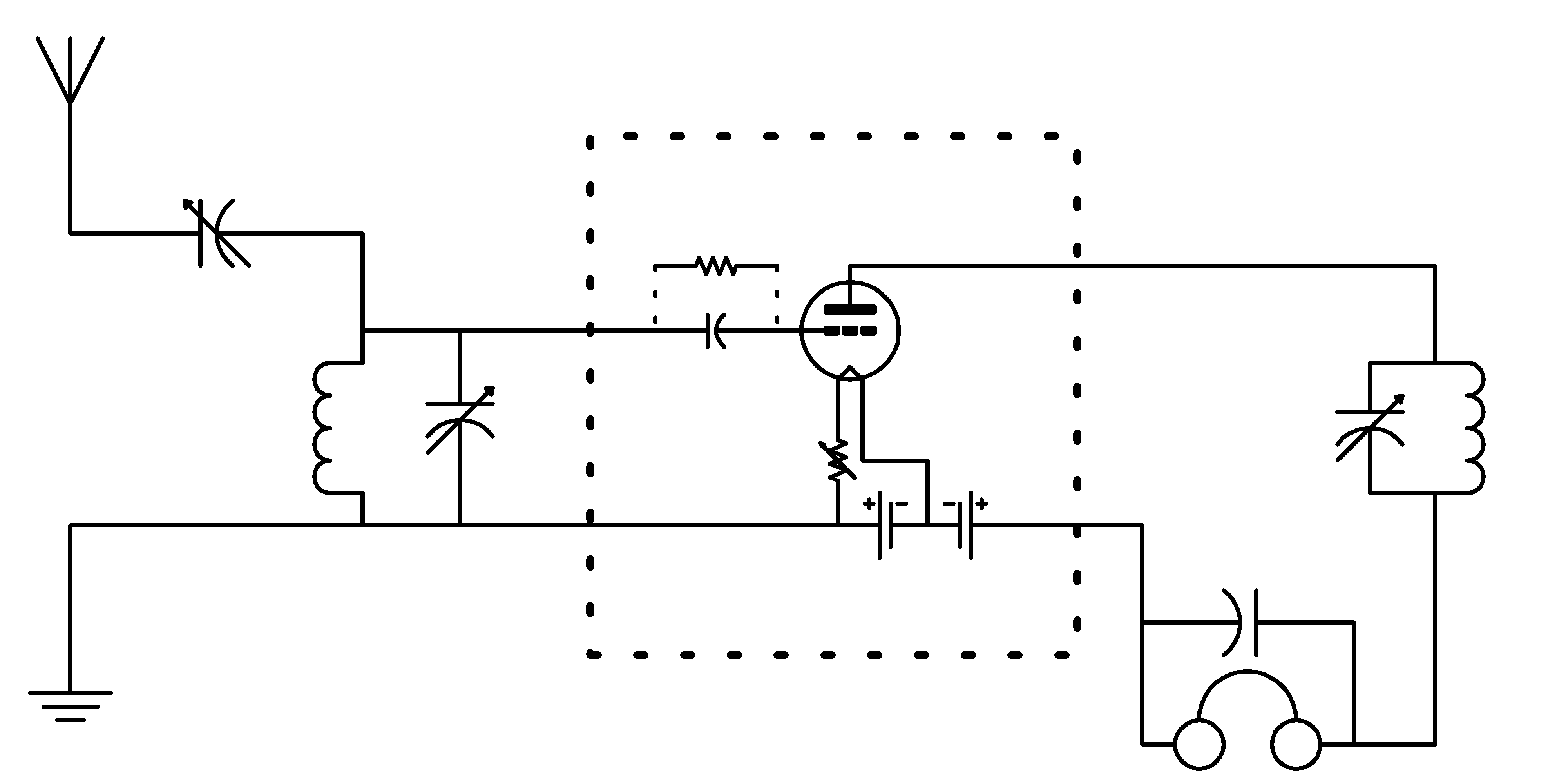Last update 20 Aug 2020
Suppose you had access to a radio antenna that would enable you to tune in signals from the past.

It's been my contention for some time now that cold silent radios have very little attraction to the casual museum visitor.
Our
current
Radio
Technology Museum installation amounts to cable
radio. A good broad-band antenna above the building
captures
low-, medium-, and high-frequency signals that are boosted
by a
distribution amplifier, and routed to radios throughout the
museum via
75-ohm coaxial cable. Our local oldies station, 1080 -
WALL, also
feeds the amp, and provides appropriate vintage programs
from a CD or
MP3 player that are not available out of the æther. We
have a number of interesting receivers on the air via this
antenna system.
But,
what about signals from the past?
As
I
started to study Edwin Howard Armstrong's early experiments
it became apparent that it would be interesting to hear what
he heard when he
discovered regeneration. He describes tuning in the
Marconi press station on Cape Cod, MCC, and how the volume
and then the timbre of the
sound changed when he adjusted the tuned circuit he had
added to the"wing" of of Deforest's Audion
receiver. We all think
we know how a regenerative receiver sounds. You get a
whooping beat note as you tune past each AM carrier on the
broadcast band.
The problem is MCC was a spark station, there was no
carrier, and there's hardly anyone alive who has actually
heard spark on the air
through a regen.
So was born the MCC simulator. A 120 hertz square wave was used to excite a parallel tuned circuit at about 800 KHz. This produced trains of damped waves with a "spark rate" of 240 hertz, the reported sound of MCC. Output was about a microwatt, which represents a pretty strong signal when applied directly to the antenna terminal of even a primitive receiver. The transmitter was keyed by a Morse signal generated by a personal computer to make the original recording.
Sure enough it was just like Howard said:
“All the old timers remember CC, later known as MCC and WCC, the Marconi press station at Wellfleet, Mass. This station was the one-hundred percent reliable testing standby of all experimenters, andon MCC the first tests were made. A standard audion detector system was set up and tuned in, and a tuning inductance introduced into the plate circuit of the audion.
Then various things began to happen. As the plate inductance was increased, the signals were boosted in strength to an intensity unbelievable for those days, the more inductance the louder the signal,until suddenly the characteristic tone of M. C. C. -- the tone which any of the old timers, if they heard it on Judgment Morn, would recognize instantly -- disappeared, and in its place was a loud hissing tone, undeniably the same station, but recognizable only by the characteristic swing and the messages transmitted.
A slight reduction of the plate Inductance and the old tone was back again, -- and then the placing of the hand near a tuning condenser, and the hissing tone reappeared.
It required no particular mental effort to realize that here was a fundamentally new phenomenon, as obscure as the principle of the operation of the audion itself, but which opened up an entirely new field of practical operation.”
That phenomenon was RF oscillation.


This the only image I found of Armstrong's original hookup. However, I believe this is something that was sent up as a demo, using equipment from the Columbia lab, some time after the original discovery. However, tracing the wires gives us the schematic on the right. So I built one.
See and hear it HERE
Armstrong's
public
demonstrations of his receiver in the Winter of 1913-14
revealed that the regenerative receiver was not only the
best receiver available for
spark radio telegraphy, but also worked extremely well
on continuous-wave Morse signals. So there were three
classes of
signals to be heard, buzzing spark, on-off keyed CW from the
high-frequency alternators, and frequency-shift keyed CW
from the
Poulsen arc stations. During a demonstration to
representatives from AT&T their chief engineer observed
that the latter sounded
like "an inebriated flute player."
So the simulated MCC spark transmitter has been joined by the Cliften, Ireland Marconi spark station, the Nauen, Germany,Slaby-Arco alternator and the San Francisco, Federal Telegraph, Poulsen Arc. The three devices are on different frequencies, and their signals are combined so that the demonstration receiver can be tuned across the band as it sounded in 1914. Thus, Virtual Æther has been attained.
Each
transmitter
is keyed by a separate Arduino micro-controllerboard.
The text used has been derived from the signals recorded
by David Sarnoff in his report to Marconi America following
the January1914 demonstration at Belmar, NJ, the location of
our Radio Technology Museum.
The
Latest Virtual Æther Video
Staring a 1940 U.S Navy type RAX Receiver
(I needed something relatively simple, so museum visitors could operate it themselves.)
More Links:
Experimental Armstrong Kiosk content - including more videos.
The Radio Technology Museum website.
Return to The Skywaves Homepage.